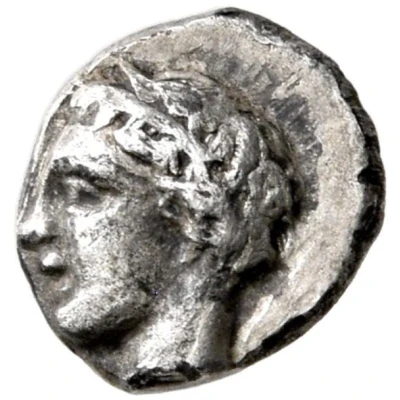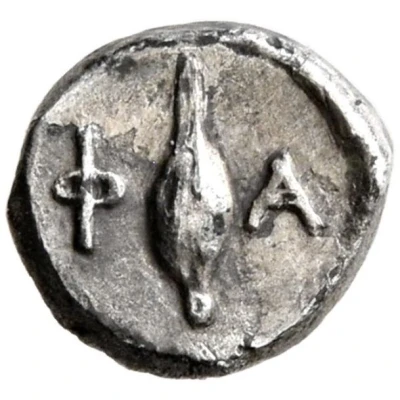


© Leu Numismatik
Hemiobol 400 BC
400 BC year| Silver | 0.30 g | 6 mm |
| Issuer | Phanagoreia (Pontos) |
|---|---|
| Type | Standard circulation coin |
| Year | 400 BC |
| Value | Hemiobol (1⁄12) |
| Currency | Drachm |
| Composition | Silver |
| Weight | 0.30 g |
| Diameter | 6 mm |
| Shape | Round (irregular) |
| Technique | Hammered, Incuse |
| Orientation | Variable alignment ↺ |
| Demonetized | Yes |
| Updated | 2024-10-10 |
| Numista | N#385547 |
|---|---|
| Rarity index | 100% |
Reverse
Barley grain within shallow circular incuse.
Script: Greek
Lettering: Φ-Α
Translation: Phanagoreia
Interesting fact
The Hemiobol coin from Phanagoreia (Pontos) was used as a form of currency in the ancient Greek city of Phanagoreia, which was located in modern-day Ukraine. Despite its small weight of 0.30 grams, the coin was valued at one-half of an obol, which was the standard unit of currency in ancient Greece. This coin was made of silver, which was a valuable and widely used metal at the time. Its design featured the head of a gorgon on one side and a quadriga (a chariot pulled by four horses) on the other. The coin's minting process was quite advanced for its time, as it was produced using a technique called "die-striking," where a die was used to stamp the coin's design onto a blank piece of metal. Overall, the Hemiobol coin is a fascinating piece of history that provides insight into the economic and cultural practices of ancient Greece.